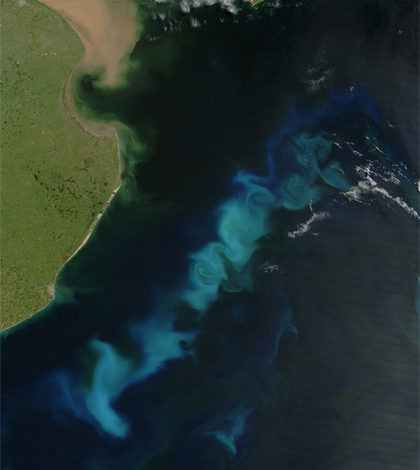Study doubts iron-fertilized marine algae blooms as carbon sink

Fertilizing marine algae with iron to grow atmospheric carbon-absorbing blooms may not be as effective as previously thought, according to a recent article in The Scientist.
Although iron encourages phytoplankton growth, it also promotes growth of other organisms with biological processes that release carbon. Formainifer, for example, feeds on the algae and releases the previously fixed carbon in through its shell-building process.
As a result, up to 30 percent less carbon may be fixed than previously thought. Scientists say that the size of the effect may be localized or related to whether the iron originates from nature or came from humans deliberately adding it to the water. More research is needed to how significant the effect would be on carbon uptake in the ocean.
Top image: Phytoplankton bloom off the coast of Argentina. (Credit: NASA)





0 comments